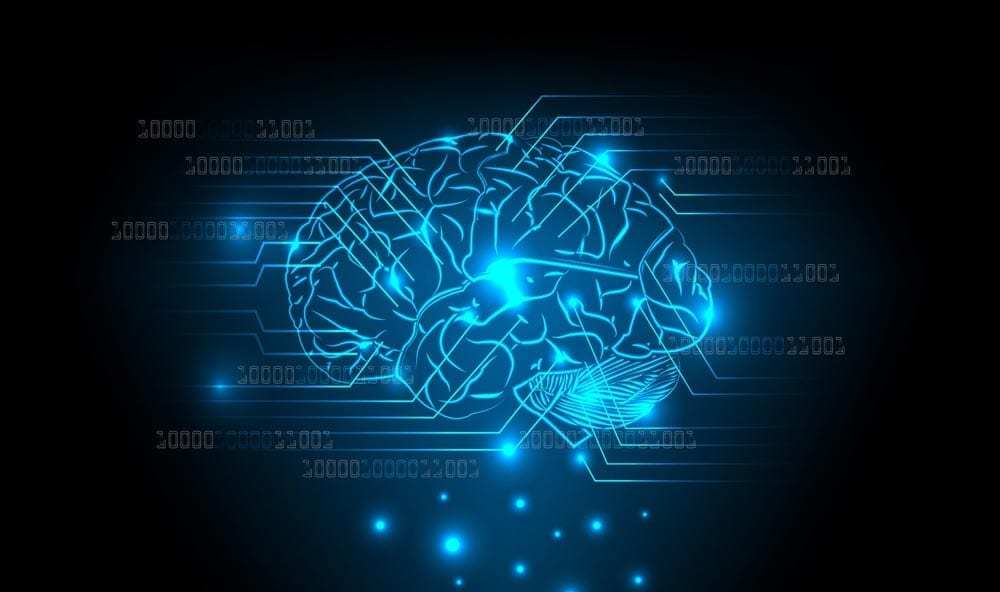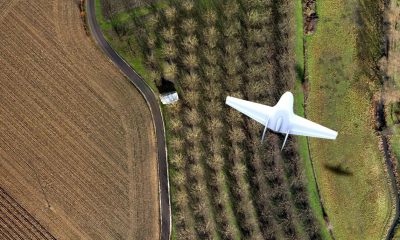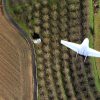AI
Brain-Inspired Decision-Making Ability In UAVs
Nowadays, decision-making is a cognitive ability that every human has. Way beyond artificial intelligence, this ability can help us make rational decisions that impact our lives. However, aside from this, it is an ability that animals have – especially the ones surviving in nature.
In order to make a step forward and understand the computational mechanism in human-like decision making, a paper submitted at the Chinese Academy of Sciences in Beijing, China centers around a spiking neural network (SNN) that can be used to model human decision-making from both connective and functional perspectives.

Using Dopamine And Spike-Timing-Dependent Plasticity (STDP) Mechanisms To Modulate The Network Learning Process
The mechanism that is outlined in the paper uses dopamine and spike-timing-dependent plasticity (STDP) mechanisms in order to modulate the network learning process, indicating more biological inspiration. As such, it can be easily applied to decision-making tasks in intelligent agents such as unmanned aerial vehicle (UAV) flying and obstacle blocking. The results of the paper support the effectiveness of the model, which compared with the traditional reinforcement learning and the existing methods, contains more biologically-inspired mechanistic principles.
The paper begins investigating the nature of intelligence from a computational perspective, to later provide how new opportunities would achieve the goal of human-like intelligence. Even though the link between human intelligence and computers (machines) is regularly pointed nowadays, the motivation of the paper is to build a more complicated, brain-inspired and cognitive computational mode that is based on brain connectome and decision-making mechanisms, applying it to decision-making for intelligent assets.
Thanks to the recent advancement of research in neuroscience, multiple brain areas are involved – meant to coordinate with each other and therefore realize brain decision-making. In the human organism, every brain area plays a unique role in decision-making. The paper aims on mimicking the human behavior (located in every part of the brain) and its potential deployment in a number of computational models.
The Three Main Pathways Of (Our) Decision-Making Mechanism
According to current experimental evidence, the decision-making mechanism in our brain contains three forms of pathways: direct, indirect and hyperdirect. The direct pathway is responsible for sending a “go” signal to facilitate the response to a specific action, whereas the activity in the indirect pathway sends a “no-go” signal to suppress any specific action. The hyperdirect pathway stimulates the brain areas.
Even though this method has been adopted for modeling decision-making in recent years, the technology has not embraced it yet in full detail. That is hwy the paper proposes a brain-inspired decision-making spiking neural network (based on BDM-SNN) and a model that will focus on the inspirations of brain decision-making circuits and mechanisms.
As cited in the paper:
“(1) We use SNN to model human decision-making neural circuit and mechanism. (2) We combine DA regulation with STDP mechanism to modulate the learning process of the network. (3) We consider the effect of OFC on the representation of positive and negative feedback. (4) We apply the proposed model to the unmanned aerial vehicles (UAV) autonomous decision-making tasks, including the UAV flying through a window task and the UAV obstacle avoidance task.”

Connecting The Cell Functions to Technology
The BDM-SNN model aims to mimic the decision-making circuits in our human brain – and stimulate the connections from the brain areas in an actual technology that could be applied to unmanned aerial vehicles (UAVs).
Hence UAVs can use the BDM-SNN model and acquire visual inputs, to later perform them as obstacle avoidance, moving to a certain direction and giving feedback on the environment. The cycle will be circulated and customized until the UAVs reach goal state and finish the task. The visual input will be pre-processed and assigned to state.
The paper states:
“Although the current BDM-SNN model incorporates several important inspirations both from the connectome and the mechanisms perspectives from human brain, more inspirations can be used to further refine the model.”
So far, the experimental model of human-like behavior and decision-making has been experimented with UAVs – and the results have been positive. However, the paper is not fully deployed by any larger manufacturer which is why it still serves as a base for further developments in this technology.
“We will further explore the multi-task decision making circuit and mechanisms in human brain, and optimize the existing model to conduct more complex tasks.”
Citation: A Brain-Inspired Decision-Making Spiking Neural Network and Its Application in Unmanned Aerial Vehicle, Zhao Feifei, Zeng Yi, Xu Bo, https://www.frontiersin.org/article/10.3389/fnbot.2018.00056, DOI 10.3389/fnbot.2018.00056



















